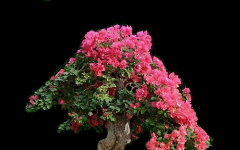Why can’t you take a bonsai tree to California?
The use of bonsai plants in California has recently started to increase a lot. The bonsai plant, which looks very good indoors, has become very popular. If you live in California, you can choose a bonsai plant. Bonsai; It is a type of plant that has been very popular in recent years and you can grow it in pots both in the garden and indoors. Bonsai plant is a small and stunted plant. If you take a bonsai tree to California, will it grow? Bonsai trees grow in California. You can live any bonsai tree you want in California. Bonsai Plant Varieties We can classify bonsai trees according to their trunk shape, number of trunks, shape of roots, shape of branches and arrangement.
Classification according to the body shapes of the bonsai plant
Bonsai plants can take many different forms. It is recommended to study these features to grow bonsai in your home or office.
- Formal upright: Its appearance has a pyramidal structure. The tree has a straight up trunk. It is distributed in all directions at the base of the roots. It has a body structure that gets thinner as you go up from the root part. The branches should be symmetrical from any direction.
- Informal upright: The tree is curved and rises upwards in an S shape. The body may be slightly tilted. The branches on the tree should be parallel to the ground, and the top should be above the base.
- Slanting: In this form, the tree lies at an angle of 45 degrees to one direction. The branch on the opposite side of the tree looks as if it is balancing the tree. The roots of the tree are more prominent on the reverse side. Despite the tree’s sloping appearance, its branches are parallel to the ground.
- Coilet Style: In this style, the body has a high degree of curvature. In some cases, the body is curled as if it is wrapped around itself.
- Cascade – Semicascade: It is the hardest shape found in the bonsai plant. The stem should be twisted and grow out of the pot or to the side. If the branches go down into the pot, it is Cascade style. If the branches do not pass into the pot and grow to the side, it is a semi Cascade style. The aim is to give the plant the appearance of a waterfall.
- Literati, Swan Style: In this style, all branches of the Bonsai tree are gathered in an irregular manner at the top of the tree. It has a long trunk height. Its style is elegance. How to prune bonsai?
- Twister: The whole body of the plant is curved. The folds are formed by the nature of the plant itself.
The trunk characteristics of the bonsai tree

- Single – Trunk: The tree has a single trunk extending upwards. The first branches are located on the ground.
- Twint Trunk (Double Trunk): In this form, the tree is divided into two main trunks with the same trunk but different lengths. When viewed from the front, the branches are open and resemble the letter V.
- Three Trunks: There are three different trunks in the same trunk, but the strongest trunk is in the middle and the other two are next to it.
- Five Trunks: There are five different trunks in the same trunk. The strongest trunk is located in the middle. Others are next to him.
- Multibody: More than five stems are formed on a single stem. The feature of this style is that the branches are very close to each other as if they are clustered and grow from the same root.
According to the shape of the roots
- Exposed Root: The roots of the bonsai plant are growing outside. The bare roots make the plant look as if it has been in very difficult conditions for many years.
- Sinuous: It consists of many branches and these branches appear to have grown from different roots, but they all grew from one root below the ground. Bonsai soil change times
- Raft, Raft Style: Its name comes from being like a raft. The branches here have emerged from the main branch buried in the ground.
According to the shape of the branches
- Broom, Bouquet Style: It has a broom-like appearance. It has a body structure that tapers towards the upper part. Different from other Bonsai species, this form has a large number of branches and a fringed branch structure.
- Wind Style: It has a sideways slant appearance. It creates an exposed appearance against a continuous wind blowing from one direction. The branches are long in the lower parts and become shorter as they go up. It often has an irregular branch structure.
- Extended: A single-trunked tree with a single thick branch that grows to one side. How to make a bonsai tree? >>






According to the shape of the branches